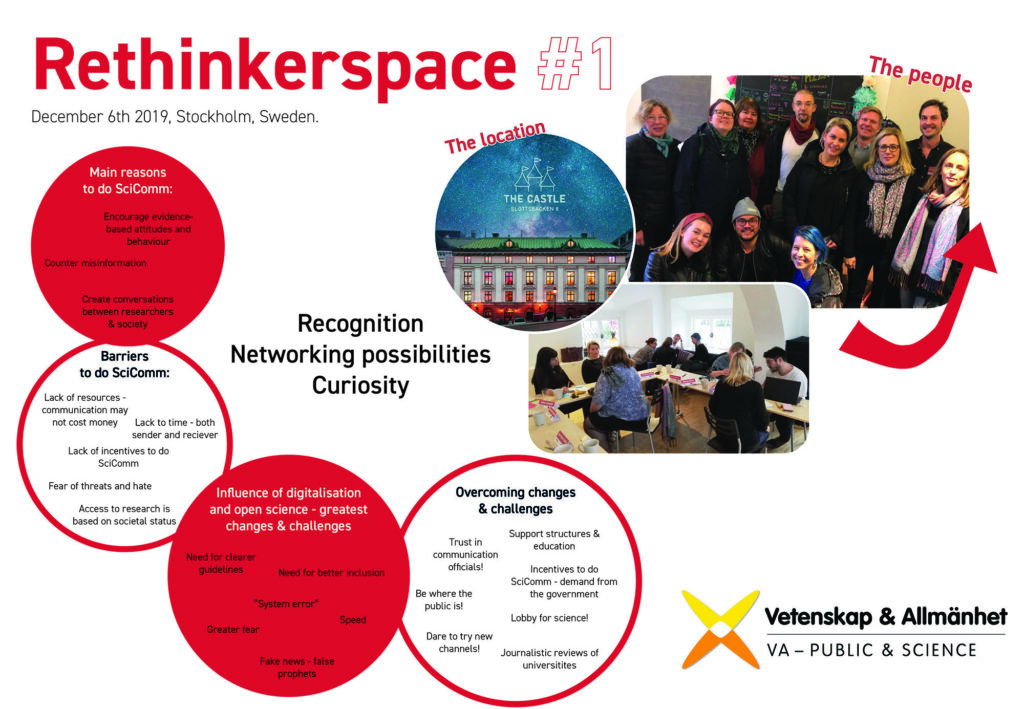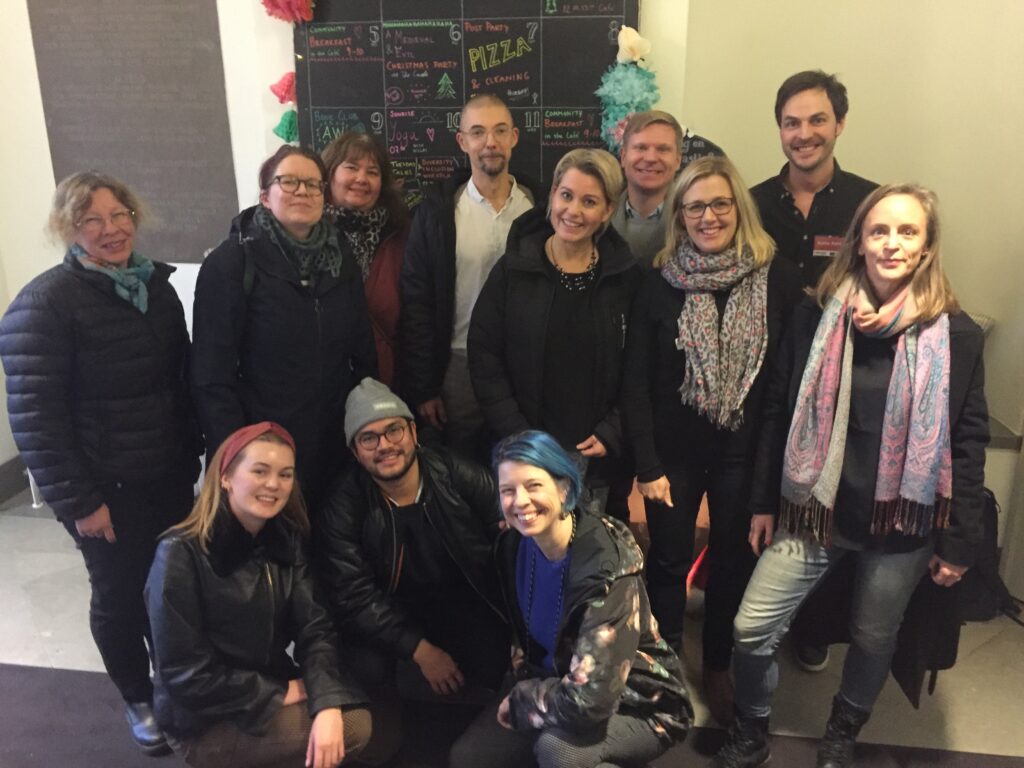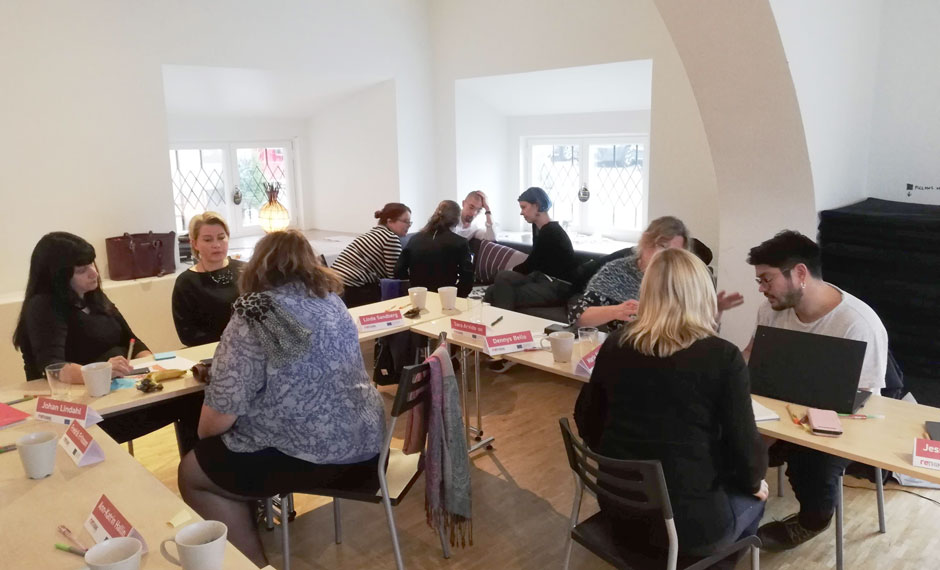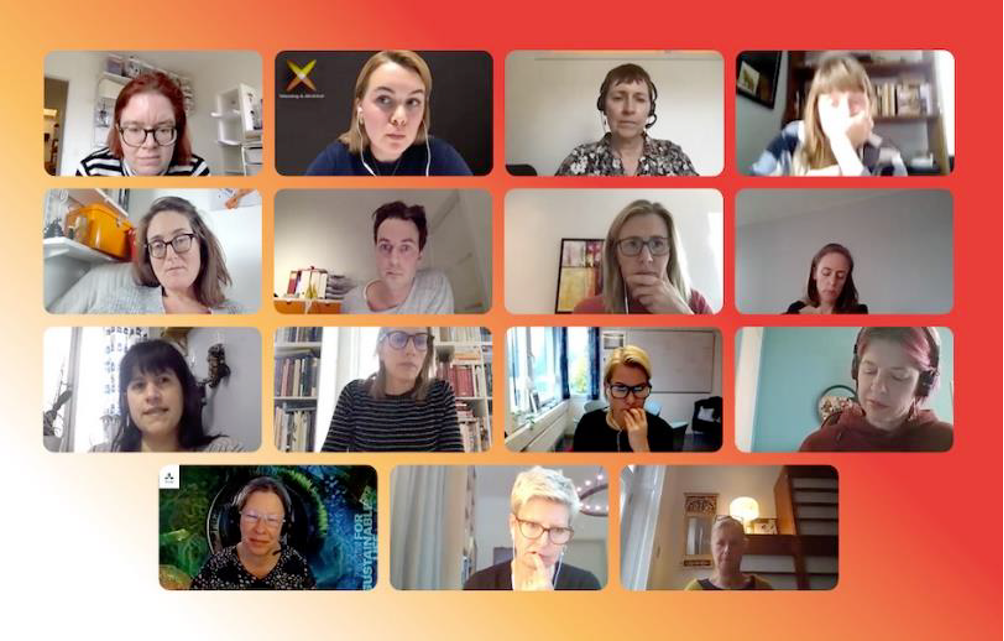
WORKSHOP #1 It’s an early December morning, the snow is falling lightly over Gamla Stan, the old medieval city centre of Stockholm. In a room at the bottom floor of the Flemingska Palace, a grand old building from the 17th century, people are starting to arrive. As I step through the door, the smell of coffee and expectations hit me. I look around and see eleven other people in the room.
The clock is getting close to 9 a.m. and we are invited to sit down around a large table. I learn that the reason we are gathered here today is that we are all, in one way or another, engaged engaging the public with science. We introduce ourselves and I realise that we are many people across a wide range of sectors that want to make science more accessible to all. Sometimes it feels like I am alone in my mission, but in this room, I am not. There are the communication managers and the community engagement officers from universities, journalists, scientists, the comedian, the podcasters, the writers, the PR people, the museum programme coordinator, the digital media expert. I haven’t met any of them before but as we begin to talk, I realise we share the same goals, missions, and challenges.
We start talking about our audiences, how we try to reach them, and what barriers we face while doing so. As the day goes by, we move into discussing what problems we see in the science communication sphere and what solutions we wish to see. All agree that lack of time and resources is a significant barrier to science communication. Other barriers we meet in our daily lives are the fear of a backlash when communicating science, lack of incentives for researchers to engage in science communication, the fast-paced digital landscape, fake prophets spreading disinformation, and marginalised communities being hard to reach and include in science. We wish to see the communication of science having a higher status in society, and to see more support for researchers who want to engage in science communication. We also wish to see new, creative ways to disseminate scientific knowledge so that it reaches all communities.
“This is amazing,” I think to myself. “We all accomplish so much on our own, just imagine what we can do when we get to learn from each other”. As we reach the end of this first meeting, I find myself longing for the next. With all these people together in the same room, we will surely find new ideas and ways to communicate science in the 21st century.


WORKSHOP #2 (held in two sessions). When discussing online this time the implications of people’s sensemaking mechanisms for science communication, the Swedish Rethinkerspace pointed out that as people mainly trust their peers when making sense of the surrounding world, there is a need for scicomm to be short, accessible, and friendly. Collaboration with actors that have good contacts within society was also mentioned as an important factor for success.
When quality in digital science communication was in focus, the Swedish Rethinkerspace participants reflected upon the scholars’ answers and added their own perspectives based upon their experience of working hands-on with scicomm. The participants stressed the need for systematic changes promoting science communication in all parts of the research process. To foster a culture where we can discuss openly and constructively was also seen as an important factor in quality promotion.

WORKSHOP #3 (April 27th, 2021). Many participants recognised the concepts of reflective practice and openness and said they themselves try to implement these in their daily work. The discussions revolved a lot about what systematic changes the participants wished to see in order to promote openness and reflexivity. This might be a reason why the participants had a harder time to execute the last exercise, since it focused on what they THEMSELVES could do. I think they were not that used to reflect on that matter.
The main questions the participants focused upon were: How can we make science communication more accessible?, How can we “package” research better? and How to ensure that research is understood and taken in?, with lots of interesting inputs coming from everybody and available on the MIRO board. We conclude with a beautiful take away from one Rehinkerspace member: “I will definitely try to think in the reflective way in the future – will start TODAY!”
WORKSHOP #4 Rethinkerspace members reflected on what they have learned along the way and brainstormed on what their individual and collective outputs can be beyond the project.
Participants addressed the role of self-regulation in enhancing the quality of scicomm. In addition, quality needs to be explored in light of the purpose of the undertaken science communication. And as science communication can have multiple purposes, it is hard to pinpoint general quality criteria.
Some key actors that were identified in order to stimulate communication training for PhD students are university management, doctoral supervisors and research councils.
WORKSHOP #5: Sustainability of Rethinkerspaces
The final event in this series of Rethinkerspace workshops brought together all participants from the seven countries in a unique meeting focusing on experience-sharing, community building and sustainability.
Participants were involved in a series on activities with an emphasis on “speed-travels” to the 7 Rethinskerspace hubs, in which hosts presented the outcomes of their workshops on the main themes of the project: Sensemaking, quality of online science communication, openness and reflexivity and reaching underserved audiences. The hosts also invited the “visitors” from other countries to offer their perspective on the issues addressed.
These were the issues that were discussed extensively.
- Scientists involved in research are failing to understand and/or value science communication.
- Mainstream journalists are lacking the necessary scientific knowledge.
- Audiences are wide and diverse, with those involved in science communication finding difficult to locate their particular audiences and knowing what their audiences are seeking in terms of scientific information and knowledge.
- Science communication must communicate something bigger than information and knowledge: values. And this is probably its greater differentiator from pure science and knowledge transfer.
- The role of emotions in how audiences interact with science is too important to be ignored in strict positivistic approaches.
